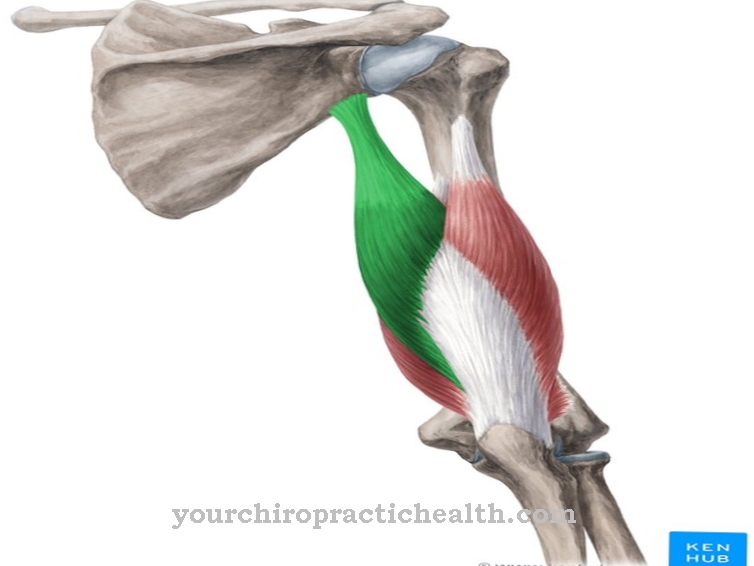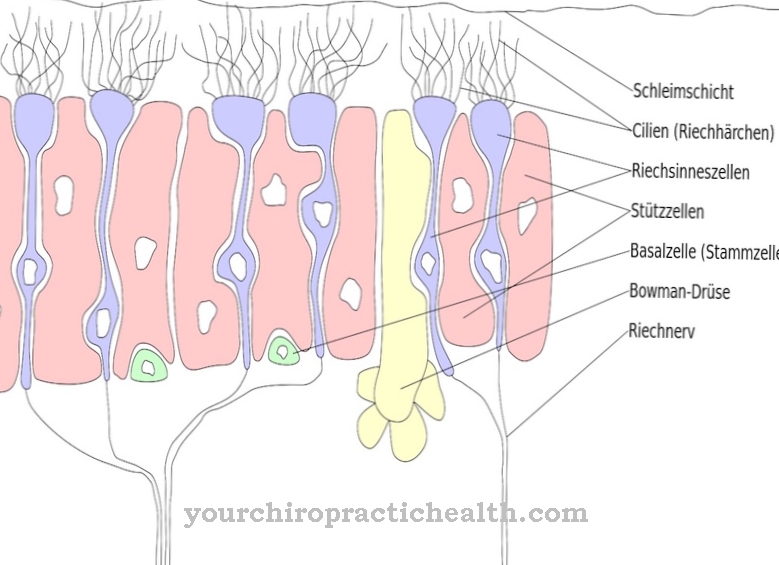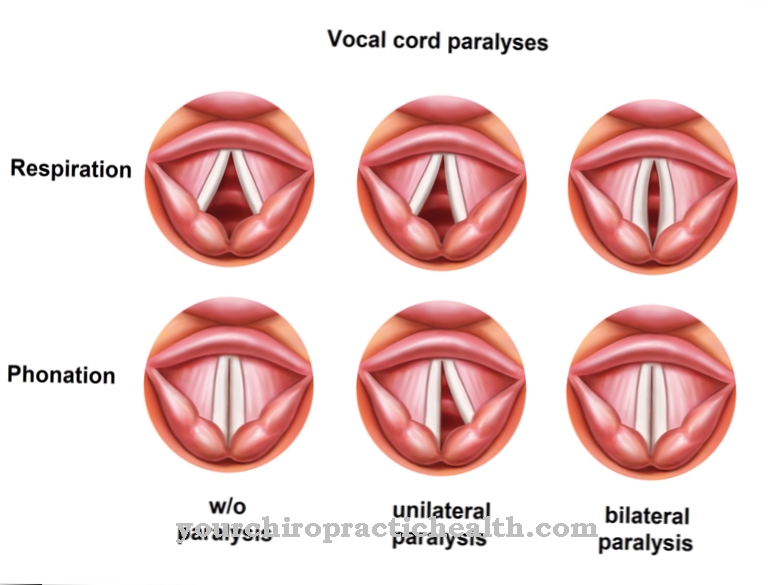The diaphragm is an involuntarily working muscle that separates the chest from the abdomen and plays a key role in breathing. It does an efficient job with every breath, and through the diaphragm it is even possible for people to laugh.
What is the diaphragm?
The diaphragm Is called the medical term diaphragm (not to be confused with the contraceptive diaphragm) and describes a plate of muscles and tendons that separates the abdomen from the chest (thorax).
With an average thickness of around 3 - 5 mm, it takes on the role of the most important respiratory muscle in humans. When the muscle contracts through contraction, the person breathes in. The exhalation occurs through the relaxation of the diaphragm. The diaphragm is also instrumental in ensuring that people can laugh.
The main artery, esophagus and main veins run through the diaphragm. Nerves and blood vessels are embedded in the muscle-tendon plate. The function of the diaphragm is special in humans and mammals. The only exception in the animal kingdom are crocodiles, which, with a connective tissue capsule responsible for breathing, have a similar mechanism for inspiration.
Anatomy & structure
The approx. 3 - 5 mm thick diaphragm has the shape of a dome-shaped plate which is surrounded by a layer of connective tissue. In the abdominal space it is also covered by the peritoneum and in the thoracic area by the pleura. In the middle of the diaphragm there is a mostly V-shaped tendon plate in which the tendon fibers are interwoven.
The tendon plate is covered by striated muscular domes that attach to the lumbar spine, the sternum and the ribs. The diaphragm has three large and several small openings. The larger openings denote the aortic slit, the vena cava and the esophageal slit. While the aortic and esophageal slits are only loosely fixed by connective tissue and can therefore be easily moved, the vena cava is firmly attached to the diaphragm in the form of a ring of connective tissue.
This is the only way that the muscles of the diaphragm can contract when inhaling without the vena cava collapsing.The blood supply is provided by four arteries, the diaphragm is controlled by the phrenic nerve, which arises from the spinal cord in the 3rd - 5th neck segment. The diaphragm works noiselessly and is controlled involuntarily.
Functions & tasks
The diaphragm represents itself as the central motor of breathing and promotes more than two thirds of the total breathing activity. By contractions of the dome-shaped muscle plate, the diaphragm contracts and sinks, the process of inhalation takes place.
While the volume in the chest area increases, the abdominal space is reduced and the organs are pressed down into the abdomen. The resulting negative pressure allows air to flow into the lungs and thus enables inhalation. The pressure of the diaphragm on the abdominal space causes the abdomen to bulge when you inhale. In a relaxed position, around 500 ml of air flow into the lungs. The relaxation of the diaphragm, which occurs through a renewed elevation from the abdominal to the chest, triggers the exhalation by compressing the lungs.
Like inhaling, this process happens involuntarily and silently. As the diaphragm relaxes and lifts as you exhale, the air can escape from the lungs and the bulging belly flattens out again. Apart from breathing, the diaphragm also plays a key role in enabling people to perform the process of laughing. Human laughter, which is physiologically characterized as an increased activity of breathing movements, is accordingly also controlled by the diaphragm.
In combination with the abdominal muscles, the diaphragm can build up pressure in the abdominal space without the abdomen bulging outwards. This function finds its application in the form of the so-called "abdominal press" during bowel movements or birth pains.
Diseases
Because of its efficient and noiseless work, the diaphragm often little importance attached. It often only becomes noticeable when it is impaired by illness or ailments. The hiccups, which are triggered by a spontaneous and jerky spasm of the diaphragm, can be mentioned as relatively harmless.
Stitches in the side are felt in the most important respiratory muscle when there is an overload with simultaneous insufficient oxygen supply. If there is a diaphragmatic hernia, the organs move from the abdominal space to the chest cavity. A diaphragmatic hernia can be congenital, but it can also develop later in life and is usually treated surgically. Complaints are expressed in inflammation in the area of the esophagus, a feeling of fullness and nausea, as well as shortness of breath.
Serious chest and abdominal injuries can lead to a tear in the diaphragm (rupture) which, due to the high mortality rate, must be surgically repaired as soon as possible. Difficult breathing in combination with a bulging of the diaphragm into the chest often indicates an elevated diaphragm. This is often triggered by abnormal changes in the abdominal cavity or lung disease.
Pain and limited movement of the diaphragm when breathing suggest inflammation of the muscle groups. Functional restrictions of the diaphragm sometimes show up in breathing and voice problems, as the contraction of the diaphragm simultaneously controls the lowering of the larynx and relieves the voice. Breathing that is too shallow, tension, psychological problems and stress can lead to massive restrictions on movement.
You can find your medication here
➔ Medication for heartburn and bloatingTypical & common diseases
- Hiatal hernia
- Eructation
- hiccup
- Diaphragmitis



























